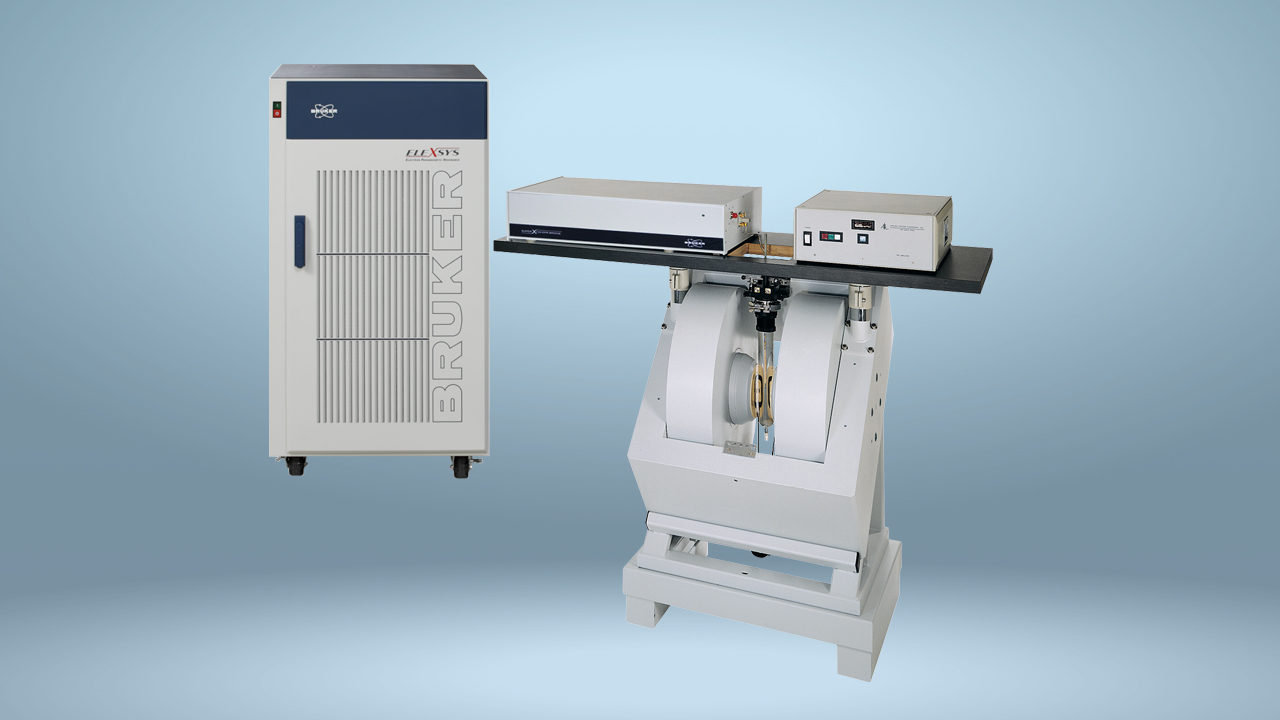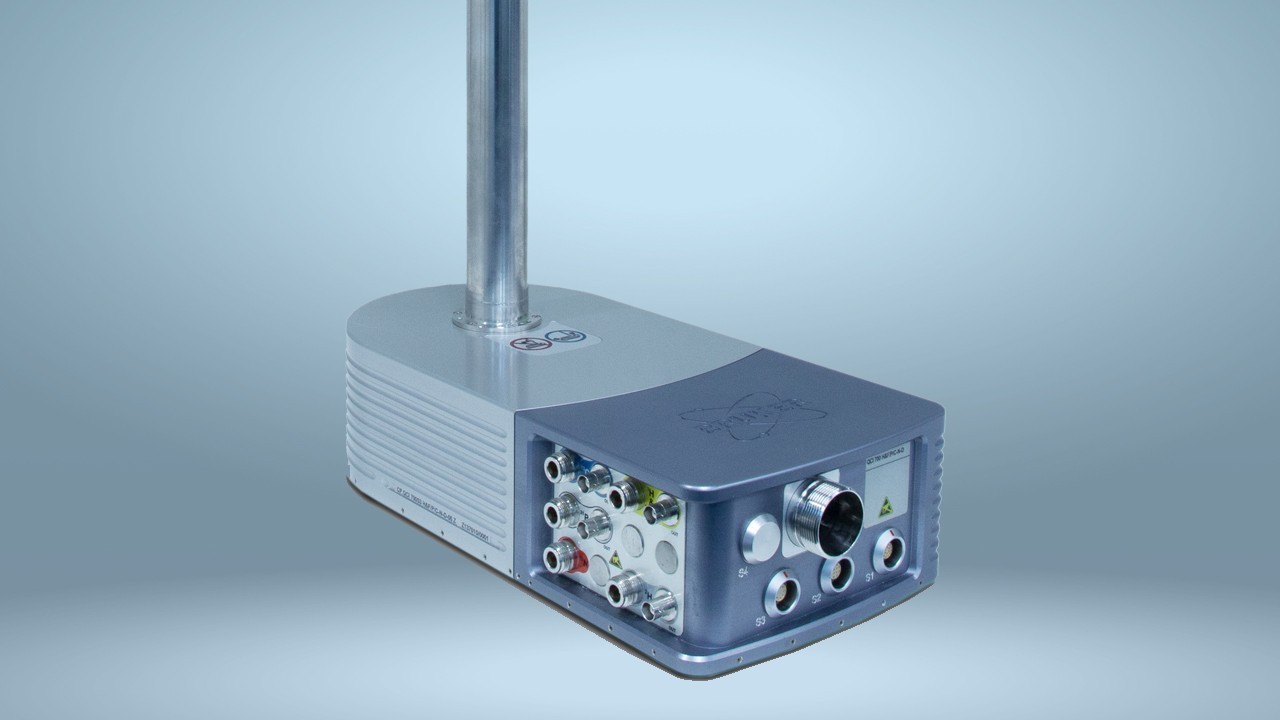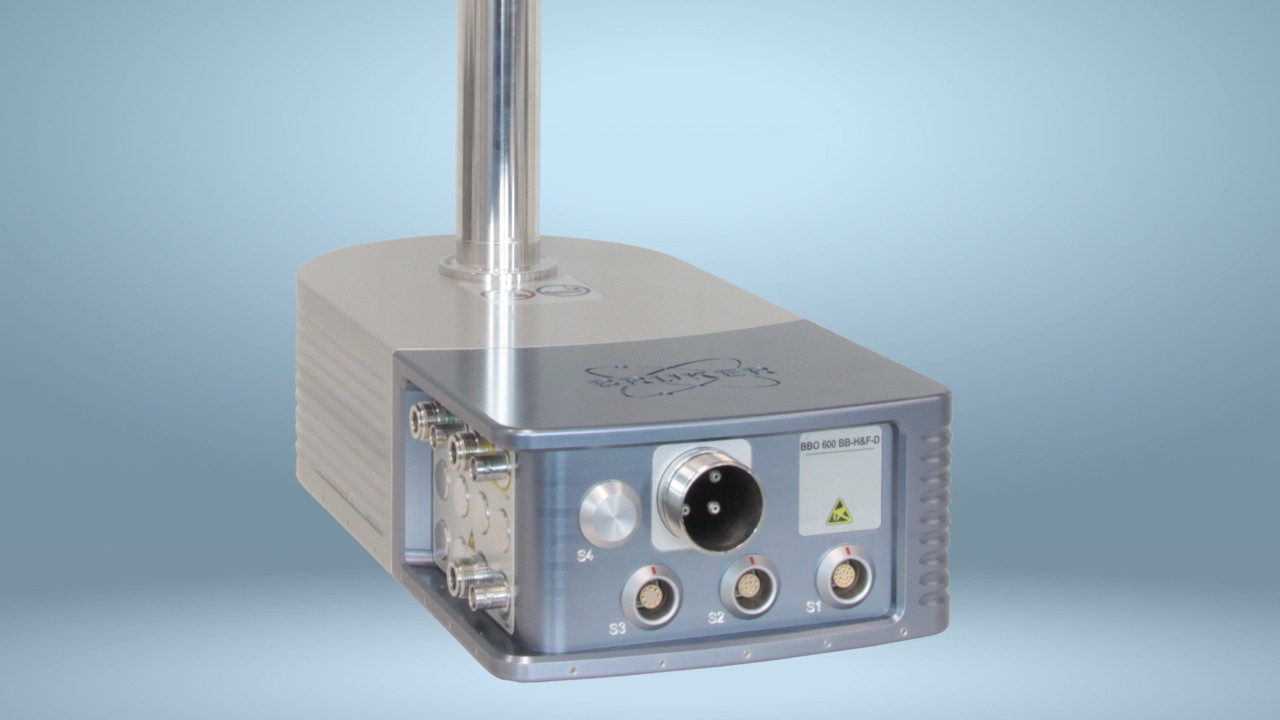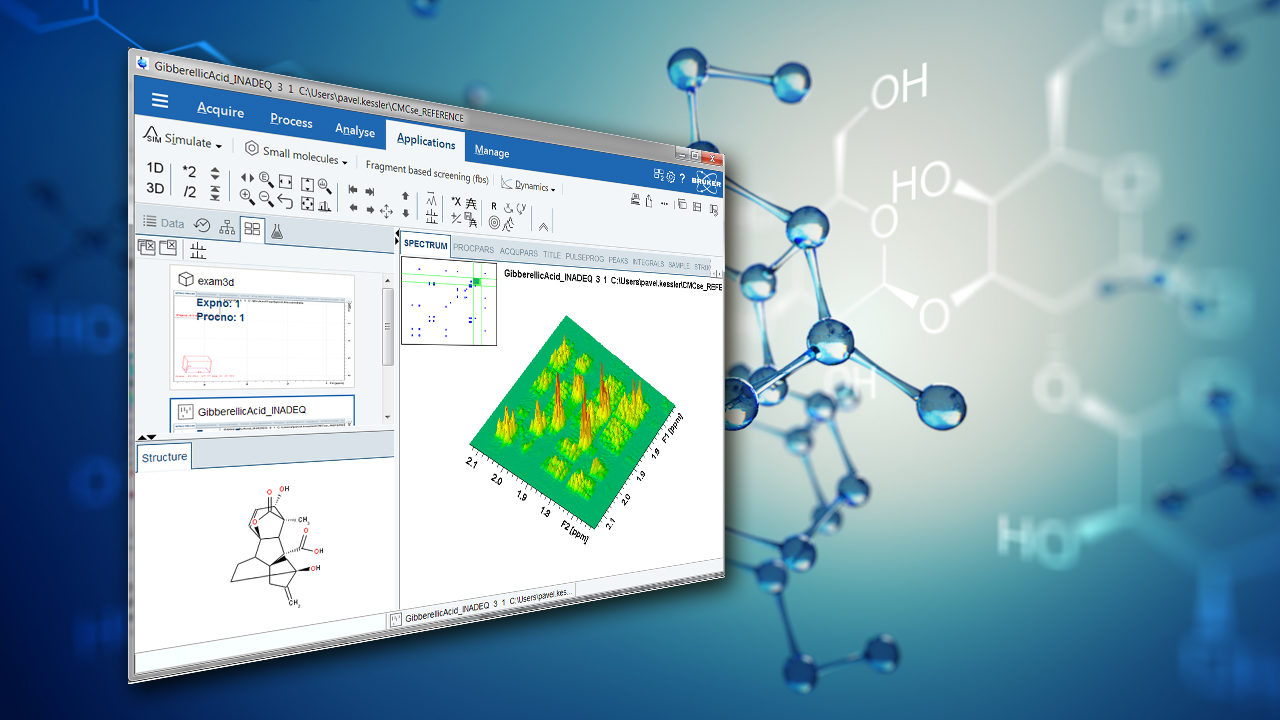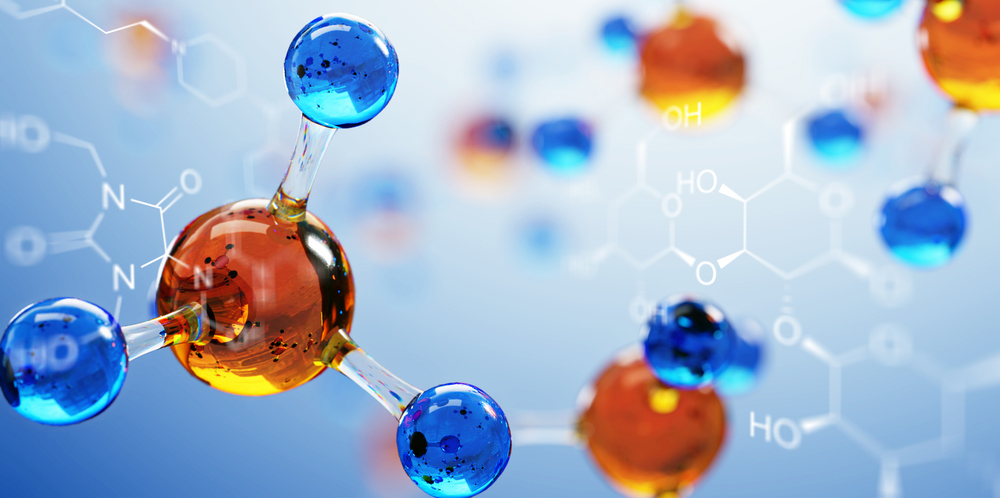

Natural Products
NMR is an essential analytical technique in natural products chemistry. Neither the elucidation of complex structures nor the total synthesis of natural product molecules can be completed without NMR data. A typical issue of the Journal of Natural Products will feature NMR data in the majority of its articles. NMR has also been applied to metabolomic studies of extracts containing natural products. As a primary ratio method of quantification, NMR can also directly be used to obtain amounts of compounds in mixtures and extracts.
Continuous advancement in Bruker’s NMR technology allows researchers to push the boundaries of these applications in natural product research. By combining state-of-the-art hardware developments such as improvements in probe design and receivers for the highest NMR sensitivity, to comprehensive software packages, Bruker provides the perfect complement of tools for optimizing your productivity and making new discoveries.
Probe technology:
The introduction of conventional and cryogenically cooled probes for small sample volumes has significantly increased the mass sensitivity of NMR. Among these the 1.7 mm MicroCryoProbe™ delivers unmatched sensitivity for small sample quantities 1) . Low microgram quantities can now be sufficient for structure elucidation and even lower amounts can be used for dereplication.
The dedicated carbon and proton Dual CryoProbe allows the collection of carbon 1D spectra of sample amounts in the mid-microgram range and even the elusive INADEQUATE experiment is now within reach.
Experiments:
All common experiments used for structure elucidation are part of the extensive TopSpin library of NMR experiments. From the basic set of 1D and 2D experiments such as HSQC and HMBC, more advanced experiments for the determination of coupling constants are also included. With the sensitivity of modern probes, correlation experiments that include nitrogen can easily be included for compounds such as alkaloids, peptides or other nitrogen containing materials. The resulting data can be used to elucidate the structure with CMCse.
Recent advances in NMR methodology include RDC (residual dipolar couplings) and RCSA (residual chemical shift anisotropy). The data can easily be acquired and analyzed with MNova Stereofitter.
Automation allows the unattended data acquisition of large series of samples collected from extracts or from various preparative scale separation methods.
Recent Publications
Computer-Assisted 3D Structure Elucidation of Natural Products using Residual Dipolar Couplings
Eduardo Troche-Pesqueira, Clemens Anklin, Roberto R. Gil, and Armando Navarro-Vazquez
New Mandelalides Expand a Macrolide Series of Mitochondrial Inhibitors
Mohamad Nazari, Jeffrey D. Serrill, Xuemei Wan, Minh H. Nguyen, Clemens Anklin, David A. Gallegos , Amos B. Smith , Jane E. Ishmael, and Kerry L. McPhail*
J. Med. Chem., 2017, 60,18, 7850–7862
Transferring Fungi to a Deuterium-Enriched Medium Results in Assorted, Conditional Changes in Secondary Metabolite Production
Bin Wang , Elizabeth M. Park , Jarrod B. King , Allison O. Mattes , Susan L. Nimmo , Chaevien Clendinen , Arthur S. Edison , Clemens Anklin , and Robert H. Cichewicz *
J. Nat. Prod. 2015, 78(6), 1415-1421
Structure and absolute configuration of karlotoxin-2, an ichthyotoxin from the marine dinoflagellate Karlodinium veneficum.
Peng Jiangnan; Place Allen R; Yoshida Wesley; Anklin Clemens; Hamann Mark T
J. Amer. Chem. Soc. 2010;132(10):3277-9.
References
Modern NMR Approaches to the Structure Elucidation of Natural Products: Volume 1: Instrumentation and Software Editors: Antony Williams, Gary Martin, David Rovnyak
https://doi.org/10.1039/9781849735186
Modern NMR Approaches to the Structure Elucidation of Natural Products: Volume 2: Data Acquisition and Applications to Compound Classes Editors: Antony Williams, Gary Martin, David Rovnyak
https://doi.org/10.1039/9781849734684
Pharmacognosy
Fundamentals, Applications and Strategies
2017, Pages 567-596
Chapter 29 - Natural Product Structure Elucidation by NMR Spectroscopy
W.F.Reynolds
https://doi.org/10.1016/B978-0-12-802104-0.00029-9
NMR in natural products: understanding conformation, configuration and receptor interactions
Teresa Carlomagno
https://doi.org/10.1039/C2NP00098A

